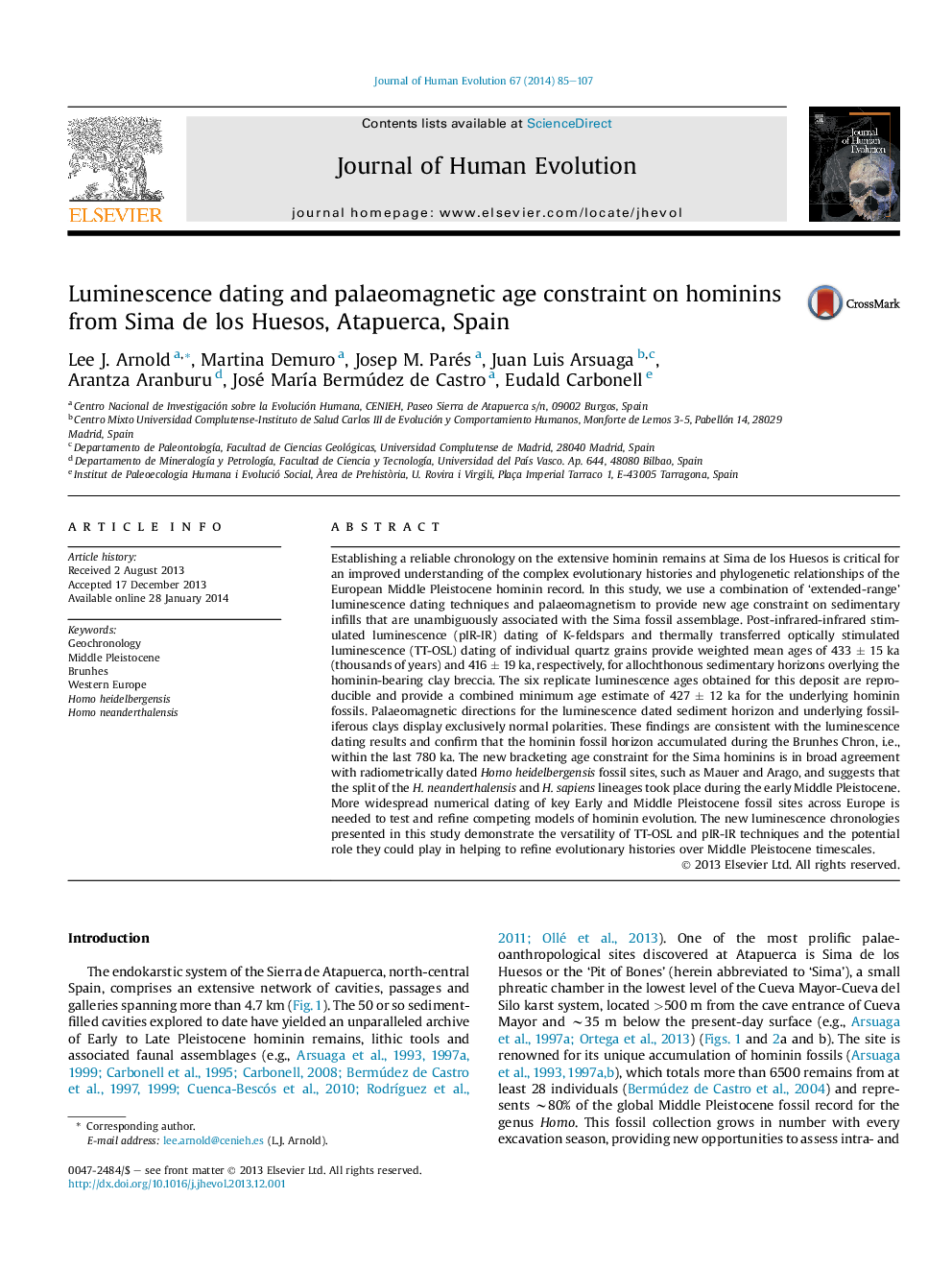| کد مقاله | کد نشریه | سال انتشار | مقاله انگلیسی | نسخه تمام متن |
|---|---|---|---|---|
| 4556198 | 1628182 | 2014 | 23 صفحه PDF | دانلود رایگان |
Establishing a reliable chronology on the extensive hominin remains at Sima de los Huesos is critical for an improved understanding of the complex evolutionary histories and phylogenetic relationships of the European Middle Pleistocene hominin record. In this study, we use a combination of ‘extended-range’ luminescence dating techniques and palaeomagnetism to provide new age constraint on sedimentary infills that are unambiguously associated with the Sima fossil assemblage. Post-infrared-infrared stimulated luminescence (pIR-IR) dating of K-feldspars and thermally transferred optically stimulated luminescence (TT-OSL) dating of individual quartz grains provide weighted mean ages of 433 ± 15 ka (thousands of years) and 416 ± 19 ka, respectively, for allochthonous sedimentary horizons overlying the hominin-bearing clay breccia. The six replicate luminescence ages obtained for this deposit are reproducible and provide a combined minimum age estimate of 427 ± 12 ka for the underlying hominin fossils. Palaeomagnetic directions for the luminescence dated sediment horizon and underlying fossiliferous clays display exclusively normal polarities. These findings are consistent with the luminescence dating results and confirm that the hominin fossil horizon accumulated during the Brunhes Chron, i.e., within the last 780 ka. The new bracketing age constraint for the Sima hominins is in broad agreement with radiometrically dated Homo heidelbergensis fossil sites, such as Mauer and Arago, and suggests that the split of the H. neanderthalensis and H. sapiens lineages took place during the early Middle Pleistocene. More widespread numerical dating of key Early and Middle Pleistocene fossil sites across Europe is needed to test and refine competing models of hominin evolution. The new luminescence chronologies presented in this study demonstrate the versatility of TT-OSL and pIR-IR techniques and the potential role they could play in helping to refine evolutionary histories over Middle Pleistocene timescales.
Journal: Journal of Human Evolution - Volume 67, February 2014, Pages 85–107
